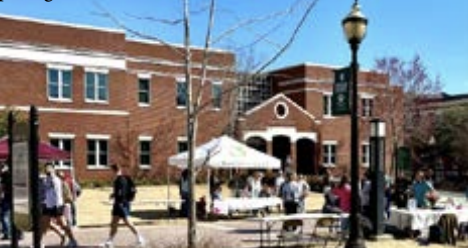Underfunded Student Organizations

February 28, 2022
GC hosts many organizations on campus and provides students with many opportunities for the chance to get involved. These can vary from sports to gardening with some working with professional organizations outside of campus to accomplish their goals. Many of these organizations host fundraisers, events and go to competitions, depending on what their purpose is. Because of this, they require funding to keep these going, which comes from Student Life on campus.
“It’s from the student activity fee and every student pays $128 every semester for student activity fees only,” said Kristy Johnson, Director of Student Activities and Organizations. “From that $128, it filters down to some for sustainability, some goes to the student activity center, some funds to the GIVE center, SGA (Student Government Association), homecoming, CAB (Campus Activities Board) and RSO (Recognized Student Organization) funding.”
Johnson goes on to explain that $15 from the student activity goes to RSO’s on campus. With GC’s enrollment, the funding amount can range from $150,000-200,000. The only way to be eligible for this funding is by being an open organization on campus without exclusive membership for students. The funding is relative to what the RSO’s request is.
SGA executive members are the people who create the budget and decide how much each organization on campus receives in funding, with oversight from the budget manager, office and staff members. This is the SABC (Student Activities Budget Committee) made up of the outgoing SGA president as the chair and incoming executive members making up the rest of the committee.
“Every group that wants funding submits a budget on what they plan on spending it on,” said James Robertson, President of SGA. “We review all the requests and decide the level of funding for each RSO on campus. We do hearings where we ask for clarification on their budget. There’s only so much money we can spend so we prioritize depending on past budgets and how much was spent or not spent.”
Most of the time, what you’re allocated is what you receive unless organizations find other avenues. A way to possibly receive extra funding is through the bill allocation process. There are instances where members of organizations must pay out of pocket to continue participating in their activities because of the limited funding that they receive.
The equestrian team is an example of one. The team has been on campus for around eight years and competes against D1 schools with open membership to all GC students.
“Every time we show, we have to pay our own entry fees into the show, even though we are showing on behalf of GC,” said Ellie Munson, co-captain of the equestrian team. “Our entry fees are approximately $35 a show so it ends up being $130 a semester. Since we do not have a barn on campus, every time show, we have to rent horses and that’s about $500 every other show. We have to pay for our own lessons which is $60 so it’s about $800 a semester per an individual, if you want to be on the equestrian team, which is not accessible at all.”
Munson continues to explain that in order to compete, it is required to pay the fees by students. The equestrian team receives about $3,500 a semester which Munson expresses that she feels it’s not adequately funded. The team has lost members to other competing and rival schools with higher funding in their programs.
There are a rising amount of student organizations showing up on campus but because there aren’t more students coming in, RSO funding is limited and minimizes allocations to organizations to make room for more. Even with SGA processes in place, what they receive is not always enough for what they need and results in students paying out-of-pocket to participate in student life on campus.






